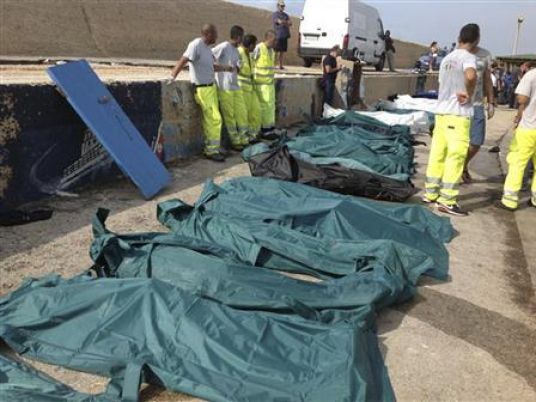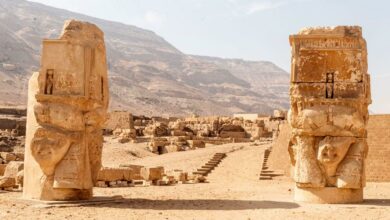
State TV has aired a short documentary film on the Russian-Egyptian relations that included photos for Egyptian and Russian presidents in different eras, omitting toppled President Mohamed Morsy's photos with Putin.
Meanwhile, former President Hosni Mubarak whose has been removed from many facilities and squares appeared in the video.
Historians say a smiliar phenomenon has occured throughout Egyptian history, dating back to the pharaohs, who would sometimes purposely remove the name of a leader in records.
History professor at Ain Shams University Gamal Shaqra says, "The historical phenomenon dubbed the Cartouche War is connected to the political history of the Egyptian pharaohs."
Sharqa says the practice of Egyptian pharaohs wiping off names of former pharaohs on cartouches recording their achievements has been associated with the Egyptian rulers during different historical periods, taking a variety of forms.
Under Mubarak for example, Shaqra says, the role of Mubarak during the 6 October War through the first air strike was magnified in media almost covering late Anwar Sadat's role in the war.
Nasser street name was changed to the Corniche Road, Lake Nasser to Dam Lake, as well as suspending work on the construction of Gamal Abdel Nasser statue and keeping the pedestal empty until it was filled with a statue of Abdel Moneim Riad during the reign of Sadat.
It is not necessarily to be the ruler or a war hero to take part in the Cartouche War according to Shaqra, sometimes the elite carries out the ruler's role.
"Gamal Abdel Nasser did not issue any decision removing King Farouk's name during his reign, but the elite practiced the role excluding the king as means of flattering Nasser," Shaqra mentioned.
Head of the Egyptian Radio, who was a junior officer, banned the songs of Om Kalthoum as soon as Nasser became president, he added.
The elite exercised the War of Cartouche after the revolution. But this time it was to flatter the people or in retaliation against former rulers, said Shaqra.




